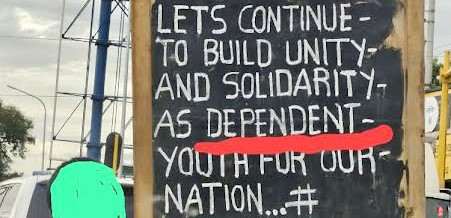Sticky issues for social media administrators

What you need to know:
An admin is the person who creates the social media group or chat group. He admits people to the group and can remove them. He is group’s gate-keeper. Managing the technology side of a group however, is the easier part.
Social media apps provide excellent avenues for individuals to unite and pursue a course. A social media group administrator (commonly referred to as “admin”) ensures that everyone in the group plays nice and that the group stays glued together.
An admin is the person who creates the social media group or chat group. He admits people to the group and can remove them. He is group’s gate-keeper. Managing the technology side of a group however, is the easier part.
Some groups have hundreds of members and as the group swells, keeping members focused becomes a daunting task. The original group’s goals often morph into something different. Members pull to different directions and the text traffic become dizzying. The civility is sometimes thrown out of the window and members stop playing nice. Unsolicited viral videos clips, memes and tones of text become the group’s staple.
Soon, the group starts to fall apart and the admin is chastised for his inability to whip the wayward members to order: managing a social media group is like herding cats.
Here is the challenge: the main consideration for selecting a group admin is not usually because of his exemplary leadership skills. Admins are usually selected because they are adept at using technology, or they are outspoken. Yet, group admin has a momentous task of keeping it tied tightly together. Besides, if members of a group do things that could be misconstrued to be unlawful, the admin could get into trouble, legally.
Communication is a difficult needle to thread in a social media set-up. Members have only one way of expressing themselves – through text. The texts are mainly truncated, and are often in a cocktail of mashed-up slang.
Unclear communication opens up grounds for misunderstanding and resentment. The more people try to make themselves clear, the more messages they exchange and soon, some members start feeling the fatigue of text traffic and contemplate leaving.
This sheer amount of texts and graphics eats into a device’s memory. It takes time to read and sift through strings of text to stay abreast, not to mention that it costs money – in terms of airtime bundles – to receive and send content.
Due to the sheer number of text and video traffic, some members, unable to cope, and leave the group. All the while, the group admin is trying every trick in the book to whip unruly members back to the main mandate of the group. These attempts generate more text as everyone attempts to share their ideas: many social media groups are akin to the biblical Tower of Babel.
There are a number of things admins could consider before creating a social media group.
First, a group should identify a capable and respected leader to help members stay on the straight and narrow. The leader should be someone who understands group dynamics and keeps members motivated. The leader should have good communication skills and should regularly summarize the group discussions so that members who do not want to read all the texts can get up to speed.
Second, the group should, at the earliest, establish ground rules on which everyone must abide by, and agree on the punishment for members who go against them.
Third, a group admin and leader should educate the members regularly on the need to be civil and mind the content they share in the group. Ideally, members should only to share information that pertains to the group, devoid of irrelevant information that could irritate others or could get the group at odds with the law enforcement.
Fourth, group members should stay off political and religious commentary, unless the group was formed for political reasons. Members should resist the itch to trade content that could be regarded as defamatory or offensive.




